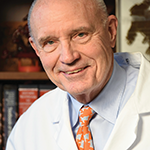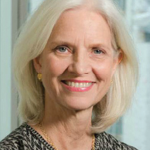While these organizational efforts were going on, clinical rheumatology was taking root in the U.S. In the early 20th century, it was orthopedists who pioneered both surgical and non-surgical treatment of arthritis. Understanding of rheumatic diseases was rudimentary; it was generally believed that rheumatic diseases were related to foci of infection, but a number of thoughtful internists were skeptical of this hypothesis and turned their attention to more critical study of joint disease.
Patient-care-oriented, non-orthopedic arthritis clinics were established by intellectually curious and compassionate clinicians at about a dozen sites across the United States in the 1920s and 1930s.
Patient Care, Teaching & Research
Between 1929 and 1937, six important academically oriented rheumatology units were established in the U.S., marking the beginning of the modern period. Many young rheumatologists who trained in these programs went forth to found rheumatology units at medical centers across the country.
The Mayo Clinic, in particular, played a critically important early role in American rheumatology’s evolution.4 In 1926, five years after arriving at the Mayo Clinic for post-medical school training, Dr. Hench was appointed to head a new service for patients with chronic arthritis, including an inpatient rheumatology unit. To gain more experience, he spent a half year (1928–29) visiting rheumatologists in Europe.
Dr. Hench served as the only staff rheumatologist at Mayo for nearly 10 years until Charles H. Slocumb, MD, joined him in 1935. He encouraged others to join him in compiling the aforementioned annual Rheumatism Reviews, for which he served as chief editor from 1932 to 1948. This rheumatology training program was of great importance nationally; for a time, this was the only place in the nation where one could train in rheumatology.
In the early 20th century, it was orthopedists who pioneered both surgical & non-surgical treatment of arthritis.
In a survey in the early 1960s, nearly 10% of ARA members had trained under Dr. Hench. Not surprisingly, Dr. Hench served a term as president of the ARA, as did three rheumatologists who remained on the staff of the Mayo Clinic after training with him: Drs. Slocumb, Howard Polley and Emmerson Ward.
In 1948, American medicine was dramatically transformed by the Mayo group when they reported that adrenocorticotropic hormone and cortisone had a marked anti-inflammatory effect in rheumatoid arthritis. For this discovery, Dr. Hench, along with the Mayo Clinic biochemist Edward C. Kendall and the Swiss chemist Tadeus Reichstein, was awarded the Nobel Prize for Physiology or Medicine in 1950.



